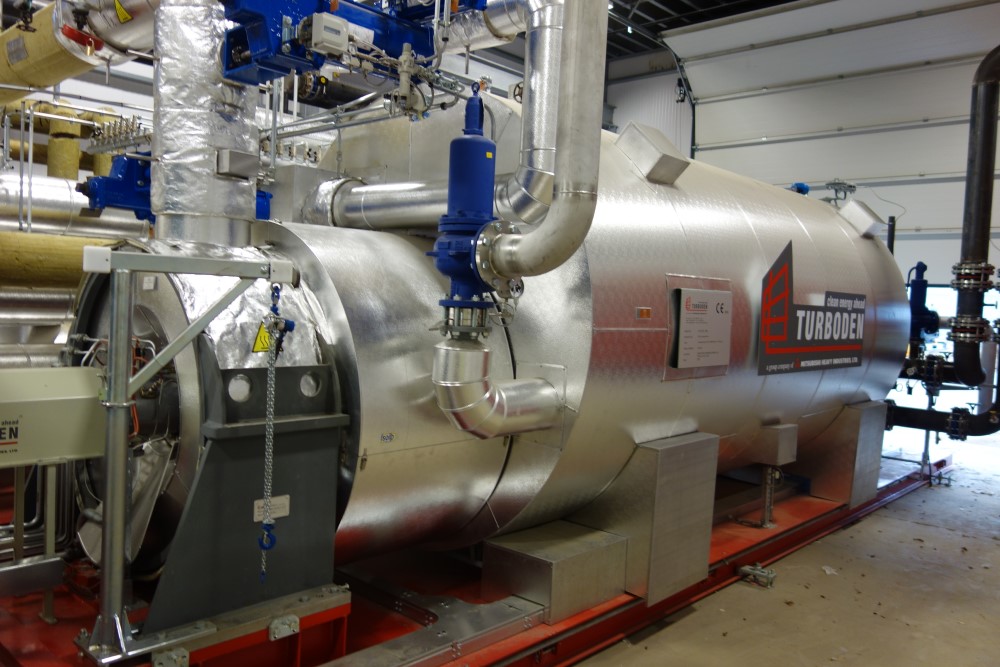Please click here to access the main AHDB website and other sectors.
- Home
- Knowledge library
- Biomass CHP: ORC turbine (Organic Rankine Cycle)
Biomass CHP: ORC turbine (Organic Rankine Cycle)
What is an Organic Rankine Cycle (ORC) system and how is it different to a steam turbine? Learn about the typical outputs and costs and the pros and cons of using an ORC turbine to power your biomass CHP installation.
Back to: Biomass combined heat and power (CHP)
What is an ORC system?
ORC systems are based on similar principles to steam turbines but use organic silicon oil as the operating medium, rather than water or steam. Organic oils employ lower temperatures and pressures compared with steam-based systems.
Wood-fuelled combustion heats the pressurised oil to 300°C, which is then allowed to expand to produce a high-energy oil vapour to drive a turbine or electrical generator. The turbine is water-cooled and the water is output from the turbine at 90°C, which is ideal for glasshouse heating.
The electrical efficiency is around 17% of the total energy input – about 3% higher than traditional steam turbines.
The advantages of the ORC system are that it performs well under partial load and, because of the low working pressures and temperatures, it is not subject to the regulations of steam equipment. ORC units are suitable for biomass CHP plants with an electrical output as small as 200 kW. Single ORC units go up to 2 MWe in size and multiple units can be installed to increase capacity.
ORC systems typically operate with a ratio of heat to electricity generation of around 5:1.
Typical outputs and costs
Typical outputs and costs of a Biomass CHP ORC system
|
Electrical output |
Heat output |
Indicative cost |
Tonnes of fuel per day* |
Fuel |
|
15 kW |
700 kW |
£900k |
7.3 |
Good quality wood chip |
|
500 kW |
2.3 MW |
£2.5m |
24 |
Good quality wood chip |
|
1 MW |
4.5 MW |
£4m |
52 |
Lower grade wood chip |
|
2 MW |
9 MW |
£6m |
103 |
Lower grade wood chip |
*24 hour operation
Pros and cons of ORC turbine
Pros
- Easy to operate and maintain, as they run at low pressure, and therefore lower staff costs
- Can be configured to run on recycled timber
- Highly incentivised through government subsidies
- Reasonably scalable for smaller applications
Cons
- Large footprint
- High initial outlay
- Low electrical efficiency
- High proportion of heat to electricity
- Can only provide heat at a maximum of 90°C
Useful links
Go to Biomass CHP: Gasification
Go to Biomass CHP: Steam turbine
Go to Biomass CHP: What about CO2?
Got a question? Ask a member of the team:
An organic rankine cycle CHP system

Image courtesy of NFU energy.
Topics:
Sectors:
Tags:

